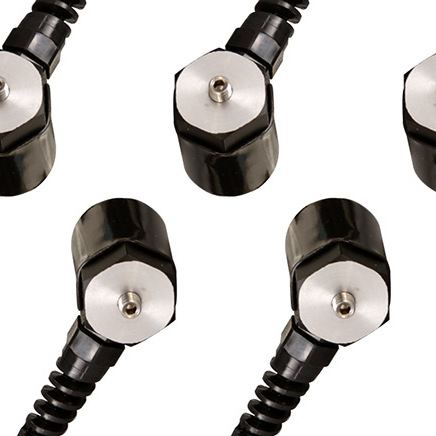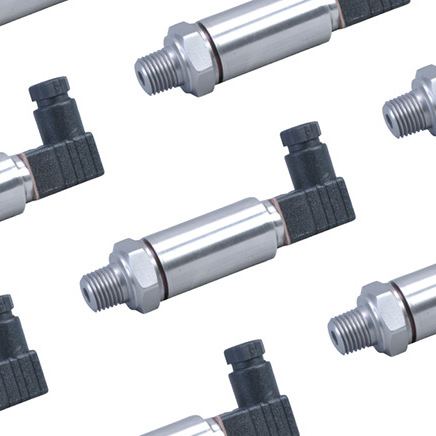To ensure accurate readings, it is essential to understand the wiring configurations used with load cells. There are two main types of load cell wiring: 4-wire and 6-wire configurations.
4-Wire Load Cells
The 4-wire load cell configuration is the most common type of load cell cable and offers high accuracy by minimizing lead resistance effects. 4-wire load cells have two wires that are connected to the excitation voltage source and are responsible for providing power to the load cell. Another pair of wires are connected to the signal conditioning circuitry or data acquisition system and carry the signal generated by the load cell – which represents the measured force or weight.4-wire load cell configuration minimizes errors caused by lead resistance, ensuring more accurate measurements. It also allows for longer cable lengths without causing significant signal degradation. However, using a 4-wire configuration may require additional components and wiring complexity compared to a 6-wire configuration.
6-Wire Load Cells
The 6-wire load cell configuration is less common but offers enhanced compensation for lead resistance effects. Similar to the 4-wire configuration, the 6-wire configuration has two wires connected to the excitation voltage source and are responsible for providing power to the load cell. Two additional sense wires are connected to a differential amplifier or a sense circuit and are used to measure the voltage drop across the excitation wires due to lead resistance. Another pair of wires are connected to the signal conditioning or data acquisition system and are responsible for carrying the load cell’s output signal – also similar to the 4-wire configuration.The 6-wire configuration compensates for lead resistance effects more effectively than the 4-wire setup, leading to improved accuracy. It also allows for longer cable lengths without causing significant signal degradation. However, the 6-wire configuration requires additional components and careful calibration to maximize its benefits.
Acquiring Data from a Load Cell with an A/D Board
While acquiring data from a load cell (or any full-bridge type sensor such as a strain gauge bridge) with an A/D board is quite common, it is also quite misunderstood. Many users make simple wiring errors, causing excessive noise – and, in some extreme cases, damage to the sensor and instrument.The first thing to remember when installing a load cell is that you must measure it with a DIFFERENTIAL input type, and not a SINGLE-ENDED input type.
First, determine if your A/D device (your PLC, meter, or DAS) can be configured as a differential input. Then, you must use a regulated power supply to provide excitation for your sensor.
IF the power supply is noisy or unregulated, then the sensor output will be noisy or will drift. Some A/D boards have built in regulated power supplies. However, due to current limitations, only one or two sensors can be connected.
Plug-in boards usually provide a +5V and -5V connection. However, this is usually the computer’s PC power supply which is not suitable for bridge sensor excitation.
The best thing to do is to purchase a separate, highly-regulated power supply that can handle the current for all of the sensors that need to be powered.

Load Cell Wire Colors
It is important to know the wire color codes for a given load cell in order to ensure that they are properly connected for accurate results. The color codes vary between manufacturer and the coding is usually provided on the load cell’s calibration certificate. It is important to follow the color coding as specified by the manufacturer. This will ensure proper wiring connections and avoid erratic output.- What is a Load Cell?
- Types of Load Cells
- Selecting a Load Cell
- FAQ
- Installing a Load Cell
- How to Wire a Load Cell?
- Troubleshooting
- Amplifiers for Load Cells
- Data Loggers for Load Cells
- Load Cell Meter
- Load Cell Controller
- Signal Conditioners
- Weighing Trucks, Trains, and Aircraft
- Dynamic Load Measurement
- Testing Load Tolerance in Cables
- Critical Component in X-ray Laser


